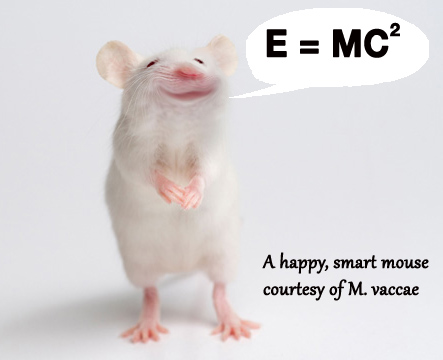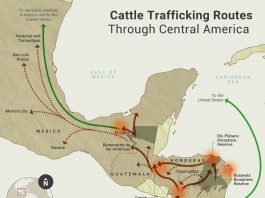Stockmanship is a powerful, yet under-appreciated and under-utilized component of operating sustainable livestock operations. It requires no additional inputs, yet studies have shown that it can significantly increase animal performance, including weight gains, conception rates, milk yields, immune function and carcass quality. In fact, according to Paul Hemsworth, a prolific Australian animal science researcher, “the importance of this topic should not be underestimated because of its implications not only for the animal but also for the sustainability and economics of the livestock industries.” [1] Burt Smith, a rancher turned agronomist, is even more to the point: “The stockperson is a major factor in the productive level of livestock and can effectively make or break an operation.” [2]
With this realization, On Pasture is reprinting a Guest Column series first published in Drovers, the purpose of which is to publish quality information on stockmanship. The series is written by a stockman for stockmen, and it focuses on practical, useful, operational knowledge. It’s ultimate objective is to provide the reader with the understanding and skills necessary to have better performing and more manageable cows.
In this first article, we necessarily need to clearly define what we’ll be talking about. Without first defining terms people may assume that they are talking about the same thing when, in fact, they are not. As regards the term “stockmanship,” it means different things to different people. Ask any dozen readers of this article to define it and they will each likely come up with something different. Therefore, in order to reduce ambiguity and confusion, it is paramount that I first clarify exactly how stockmanship will be defined in this article.
“Stockmanship” is the knowledgeable and skillful handling of livestock in a safe, efficient, effective, and low-stress manner. As depicted in the diagram below, I conceive of stockmanship as a larger entity composed of various aspects or slices, including low-stress livestock handling, natural horsemanship, ranch roping, dog handling, and facilities design. The size of each slice represents its relative importance. The most important slice, hence its larger size, is low-stress livestock handling (LSLH) because it is fundamental, indeed indispensable, to all the other slices. It also subsumes and permeates the others, therefore it is positioned above them. Without an understanding of LSLH, one cannot work livestock in a low stress way no matter how good of a horseman or roper or dog handler one is. In other words, if you do not understand LSLH you will never be a high-skill-level practitioner of stockmanship regardless of how good your horsemanship, roping, or dog handling skills may be. Conversely, one can be a high-skill-level, low-stress livestock handler, but have no need to ride a horse or rope or use a dog (e.g., consider the dairyman). So, if you are going to be good at only one slice, it best be LSLH.
Consequently, this series will begin by focusing on LSLH, defined herein as “a livestock-centered, behaviorally-correct, psychologically-oriented, ethical and humane method of working livestock which is based on mutual communication and understanding, not coercion.”
Historically, the term “low-stress livestock handling” was coined circa 1990 by Allan Nation, publisher and editor of The Stockman Grass Farmer to describe the unique livestock handling of Bud Williams. Ever since, the term has been associated clearly with the livestock handling of Bud (even though others have adopted that or similar terms, but are teaching something quite different). So, by definition, the term “low-stress livestock handling” refers to the method of handling livestock as developed by Bud Williams which, in many ways, is profoundly original and supersedes all other methods in subtlety and effectiveness. This series will focus on articulating those methods.
The purpose of the above diagram is simply to encourage stockmen to think of stockmanship in a more comprehensive and inclusive manner than is usually done. For instance, “low-stress livestock handling” and “stockmanship” are synonymous in some peoples’ minds. They are not. Low-stress livestock handling is only a part of stockmanship, albeit the indispensable part. My position is that to be a high-skill-level practitioner of stockmanship one needs to be versed in all relevant slices. I say “relevant” because all slices may not pertain to a particular stockman. For instance, not all stockmen ride horses or rope; that is, they may have no need for it in their particular operation so they are no less of a stockman for not being versed in them. In other words, their stockmanship is not diminished if they do not practice a skill that to them is unnecessary but to another stockman may be essential.
In forthcoming articles I will make the case for low-stress livestock handling and will cover the fundamentals, including principles, techniques, and practical applications (e.g., driving, driving cows and calves, receiving and de-stressing, gathering, settling and placing, fenceline weaning, corral and chute work, sorting, crowd pens, trailer loading, loading out, and more). In short, I will answer four basic questions: What is low-stress livestock handling? Why should we do it? How do we do it? How do we apply it on our particular outfits?
References
- Hemsworth. P., & Coleman, G. (1998). Human-livestock interactions: The stockperson and the productivity and welfare of intensively farmed animals. Oxon, UK: CAB International.
- Smith, B. 1998. Moving ‘em: A guide to low stress animal handling. Kamuela, HI: The Graziers Hui





